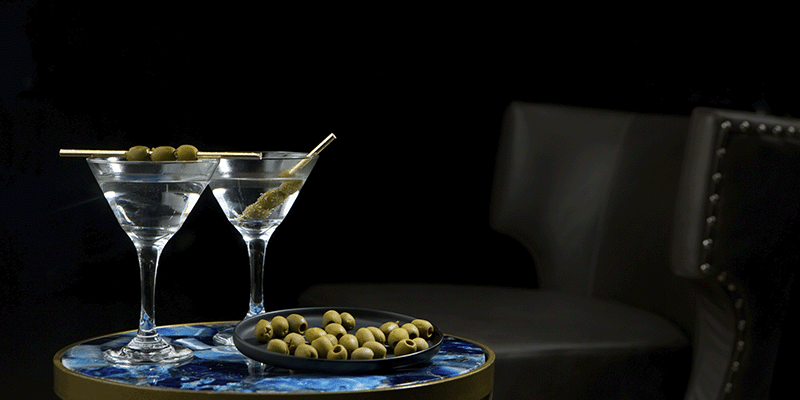Talk Dirty To Me: Martini Terminology
Made in the USA
Born in the USA, the Martini has been around for some odd 150 years. The Martini is a west coast native. Though it’s unclear, its origins are, a least, honed to the San Francisco area of the mid to late 1860s. While traditionally Gin based, some people prefer their Martini with Vodka. With so much history, you can see why this drink has variations galore, cult followings laced in Hollywood culture, and its own vernacular.
Shaken or Stirred?
We know James Bond prefers his “shaken not stirred.” However, Martinis were only stirred until shaking was popularized by this character’s preference. Currently, the trend is leaning more towards stirring though.
- Shaken – shaken hard with ice in a shaker.
- Stirred – stirred gently in a mixing carafe
Straight up or on the rocks?
It’s assumed a Martini will be served straight up by most barkeeps, but you have a say in this too. In fact, if you would like to temper the taste of the gin or vodka, then on the rocks may be a good choice for you. The choice can be tailored completely to your preferences.
- Straight up – strained to remove ice and poured into a chilled Martini glass
- On the rocks – ice remains in the drink and is usually served in a rocks glass
Ok, let’s talk “dirty.”
While this may sound a little risqué, the explanation is quite PG. Dirty simply refers to the amount of olive brine in the martini. Simply gauge how much you love Olives and order according to the spectrum below.
- Dirty – a small addition of olive brine usually half the amount of vermouth used
- Extra Dirty – uses equal amounts of brine and vermouth
- Filthy – the above and then some more!
Saturation
When the saturation of the Martini is being noted, it is in reference to the amount of Vermouth being added to the drink. Typical recipes call for a 6:1 ratio of gin to dry vermouth. However, using these terms alters that ratio to your preference. Furthermore, whether the Vermouth is dry or sweet is also incorporated into the terminology. The language even goes on to indicate ratios and blends.
- Wet – more vermouth than the typical ratio
- Dry – half the usual amount of vermouth
- Extra Dry – quarter the usual amount of vermouth
- Bone Dry – this is a technique that involves rinsing out a chilled martini glass with vermouth
- Perfect – equal parts sweet and dry vermouth
- Reversed – ratio of gin (or vodka) and vermouth are flipped
- Sweet – substitutes dry vermouth for sweet vermouth
A little this a little that.
While a classic Martini would never be caught near chocolate, the lingo does lead to some frills. A typical martini will include an olive. By now, it’s obvious every element of this drink can be customized if you know the right code words.
- With a twist – a shaved and twisted zest from citrus to add oil; typically lemon but others can be used as well; the zest can be left in or removed
- Burnt – an added splash of a smoky malt scotch whisky
- Gibson – replaces the standard olive garnish with a pickled onion
You got this!
Want to practice at home before you order at the bar? Come to us for your gin, vodka, and even a Smokey scotch if you want to burn it!
Don’t forget to follow us on Instagram!


